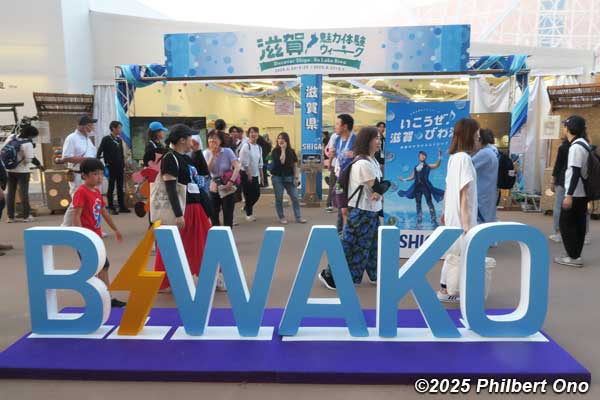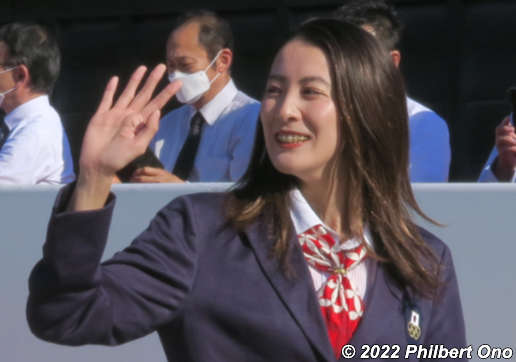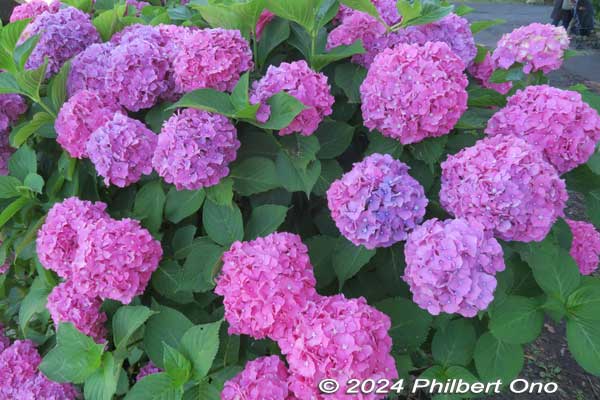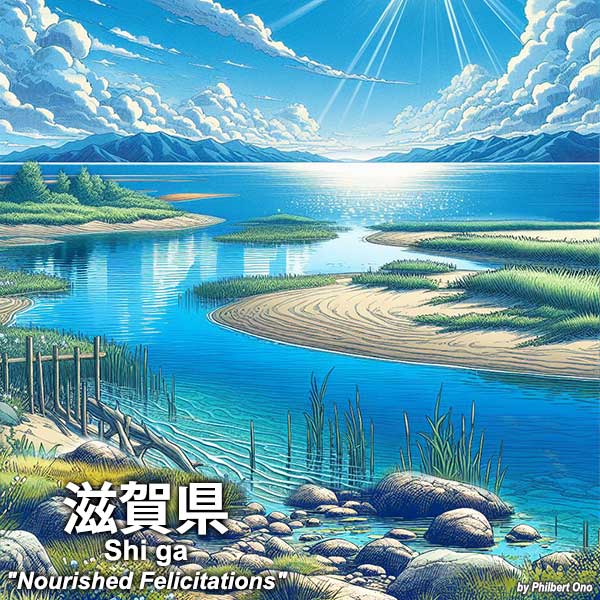Updated: July 12, 2025
Maihara Hikiyama Matsuri (米原曳山まつり) is a traditional float festival highlighted by child kabuki performed by local elementary school boys in Maibara, Shiga Prefecture, Japan. It is held annually in mid-October during the three-day holiday weekend (Sat. to Mon.) for Sports Day, a national holiday. Festival is held near JR Maibara Station.
In 2025, it will be held on October 11 (Festival Eve), 12 (Main Day), and 13 (After Festival) with the Asahiyama float performing child kabuki.
Since there’s no adequate festival information in English, I’ve written this comprehensive guide based on the festival held in Oct. 2023 when the Asahiyama float performed a famous kabuki play called Ehon Taikoki: Amagasaki Kankyo(Illustrated Chronicles of the Taiko Regent – At Amagasaki Hermitage 絵本太功記 – 尼ヶ崎閑居の場).
The video also shows festival highlights and the complete version of the kabuki play with English subtitles. As of this writing, there are no other videos of this play in English.
Maibara is an easy day trip by train from Kyoto, Nagoya, or Kanazawa. The festival site is a short walk from JR Maibara Station on the JR Tokaido/Biwako Line, Tokaido shinkansen bullet train line (Kodama or Hikari), and Ohmi Railways. See map below.
Maibara is a small lakeside city (pop. 35,000) sandwiched between the two larger and more famous cities of Hikone and Nagahama. It’s best known for JR Maibara Station which is one of the stops on the Tokaido shinkansen bullet train line and also Mt. Ibuki (Ibukiyama 伊吹山), the highest mountain in Shiga Prefecture and one of Japan’s 100 Famous Mountains.
Maihara (米原) is the name of the residential area where the festival is held in the city of Maibara (米原市). The kanji characters are the same. Hikiyama means “float,” and Matsuri means “festival.”
Overview
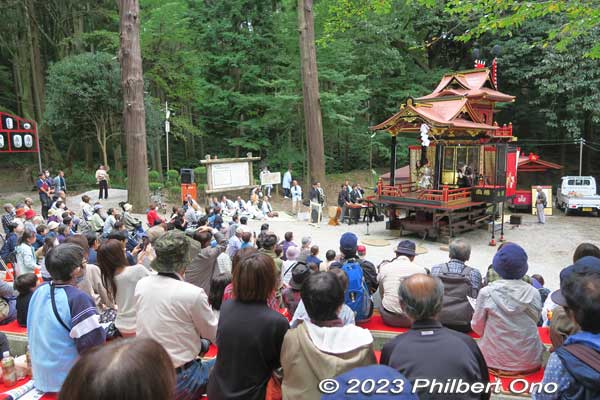
- Festival schedule in detail
- Festival tips
- About the festival in detail
- Festival floats
- Kabuki characters
- Map
- Side trips
The festival has three ornate wooden floats belonging to three different Maihara neighborhoods near JR Maibara Station (east side). Usually only one of them appears in the festival and holds child kabuki performances (kodomo kabuki) on the float’s small stage. They are all part of the parish of Yutani Shrine, a local Shinto shrine in Maihara. More about the floats here.
Kabuki is performed by five or six boys around age 6 to 12. They wear authentic kabuki makeup and costumes and undergo intensive training for about two months before the festival. They perform a well-known kabuki play lasting for about an hour. The kabuki play changes every year, but they may perform a play that was performed previously.
You can see kabuki on each of the three festival days from Saturday to Monday. They perform a few times each day and evening in different locations within the Maihara neighborhood. The float therefore moves to these locations with great fanfare. All within walking distance. The main kabuki performance is held on Sunday at Yutani Shrine near JR Maibara Station. (See the basic festival schedule below.)
Maihara Hikiyama Matsuri is similar to the larger and more famous Nagahama Hikiyama Festival held in mid-April in neighboring Nagahama. It was inspired by the festival in Nagahama and the floats were built by the same carpenter family in Nagahama. Maihara’s child kabuki actors are also trained by the same instructors who train the child kabuki actors in Nagahama. The quality of the kabuki acting and presentation are therefore very high.
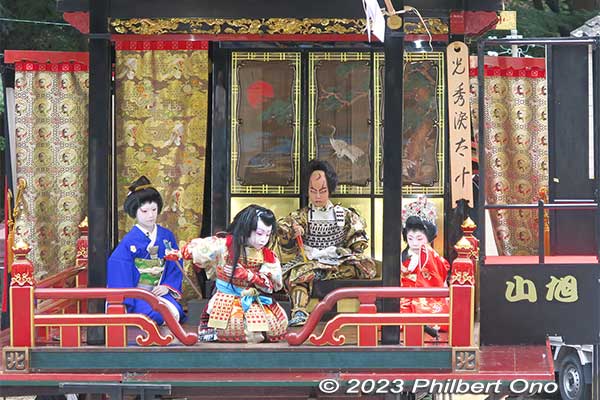
Maihara Hikiyama Matsuri basic festival schedule
Maihara Hikiyama Matsuri (also called “Maibara Hikiyama Matsuri”) is held annually on the three-day holiday weekend when the second Monday in October is a national holiday for Sports Day in Japan. Basic festival schedule below. The exact kabuki performance schedule is on the festival pamphlet (see Tips below).
Day 1, Saturday (Festival Eve or Yoimiya 宵宮)
Kabuki is performed a few times in the float’s neighborhood during the day and early evening. From around 7:30 pm, the float then moves to Yutani Shrine (Noboriyama procession) where it remains overnight. Lots of people pull it for the short distance.
Day 2, Sunday (Main Festival Day or Honraku 本楽)
At around 9:00 am, the child kabuki actors walk in a procession (Owatari 御渡り) from their neighborhood to Yutani Shrine. They are in full kabuki costume and escorted by their father or grandfather in an entourage. They pray at the shrine upon arrival.
From around lunch time, kabuki is performed at the shrine on the float. This is the main kabuki performance attracting the festival’s largest crowd. There are bleachers to sit on. The kabuki performance is about an hour long.
The float then moves to other locations nearby and performs kabuki again two or three more times. The day’s last performance might end as late as 9:00 pm or 10:00 pm.
Day 3, Monday (After-Festival Day or Goen 後宴)
For people who missed seeing the kabuki on Days 1 and 2, they can see it on this day. Kabuki is performed a few times in the afternoon and evening as late as around 9:00 pm or 10:00 pm in their neighborhood. Final performance is called Senshuraku (千秋楽) when they usually wear silly costumes (see video) as a gag.
Detailed festival schedule with photos below.
*Note that the festival is outdoors, so if it rains, you’ll need an umbrella. In the case of heavy rain, the kabuki performance may be canceled. Best to go when rain is not forecast.
Maihara Hikiyama Matsuri is scheduled to be held on the following dates in the next five years:
2024: October 12th (Sat.), 13th (Sun.), and 14th (Mon.) – Sho-ouzan float will perform.
2025: October 11th (Sat.), 12th (Sun.), and 13th (Mon.)
2026: October 10th (Sat.), 11th (Sun.), and 12th (Mon.)
2027: October 9th (Sat.), 10th (Sun.), and 11th (Mon.)
2028: October 7th (Sat.), 8th (Sun.), and 9th (Mon.)
Tips for seeing Maihara Hikiyama Matsuri
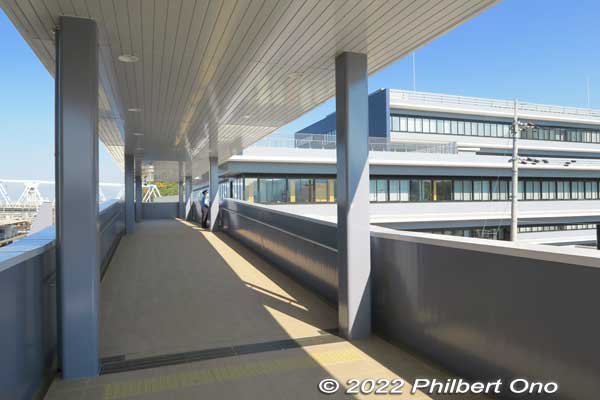
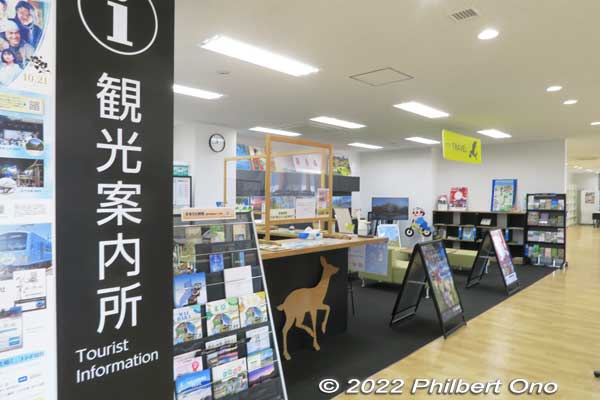
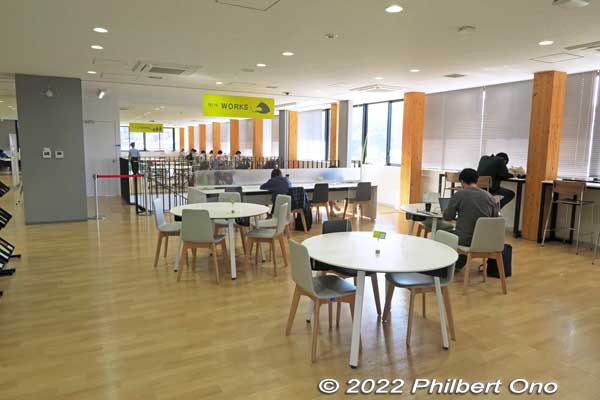
When planning to see Maihara Hikiyama Matsuri, you need to find out the following:
- Festival schedule and kabuki performance schedule.
- Location of kabuki performances on the day you plan to visit.
- Name of the float performing kabuki.
- Location of the float’s storehouse and nieghborhood.
- Location of Yutani Shrine if you plan to visit on Sunday (main festival day).
First you need to know the name of the float that will perform kabuki during the festival. Then find out where their float storehouse is located because most of their performances will be held in or near their neighborhood.
For the exact times and locations of the kabuki performances each day, obtain the official festival brochure available at the official website or at the Maibara Tourist Information desk in Maibara City Hall (3rd floor) connected to JR Maibara Station’s east exit.
The festival pamphlet gives the time and locations (map) of the float and kabuki performances on each festival day. It also gives the title and synopsis of the kabuki play and introduces the kabuki actors. Although the information is in Japanese only, you can use Google Translate camera, etc., to translate it. The easiest way might be to visit Maibara City Hall and ask the Maibara Tourist Information desk.
Official website: http://www.biwa.ne.jp/~hozonkai/
If you arrive in Maibara too early for the next kabuki performance or need to rest, you can hang out and wait inside Maibara City Hall’s 3rd floor where there’s a citizen’s lounge for the public (市民活動スペース). Open 8:30 am to 9:00 pm. It’s right next to the Maibara Tourist Information desk and connected to Maibara Station’s east exit corridor above street level. The lounge has chairs and tables, and some school kids do their homework here.
After you find out the time and location of the kabuki performances, look up the kabuki play that will be performed during the festival. The kabuki play changes every year and it is usually a famous kabuki play. Therefore, you can probably find a synopsis in English.
For example in 2023, the Asahiyama float performed a famous kabuki play titled, Ehon Taikoki – Amagazaki Kankyo. Search for this title and you can see an English synopsis here or a version on YouTube. Knowing the story will help you understand the kabuki play when you see it. However, even without knowing the story, you can still enjoy the costumes, makeup, and drama.
Maibara City Hall’s 1st floor (street level) has a small shop selling snacks and souvenirs until 5:00 pm. There’s also a small souvenir shop next to Maibara Station’s east exit (go right when exiting) on the street level (Orite Conce).
If you need any food or drink, buy it at the small 7-Eleven kiosk inside Maibara Station. There are no convenience stores or restaurants in the neighborhoods where the festival is held. No food stalls either.
The festival is not crowded at all. Very easy to move around and take pictures or video. Maibara hasn’t really been discovered by tourists yet, Mostly locals see the festival and hardly any foreigners.
Restrooms are available at the train station, City Hall, and Yutani Shrine.
History of Maihara Hikiyama Matsuri
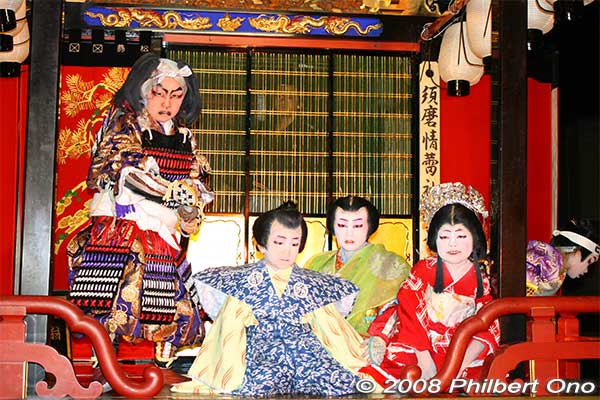
Japan has many traditional float festivals with the biggest one being Gion Matsuri held in Kyoto in July. Only a handful of float festivals feature child kabuki and most of them were inspired by Nagahama Hikiyama Matsuri (held in mid-April) including Maihara Hikiyama Matsuri.
According to written records, Maihara Hikiyama Matsuri started around 1764–72 by which time there were three floats and child kabuki being performed. Kabuki started in the 17th century and although the founder was a woman (Izumo no Okuni), the Edo government later banned women from performing to make kabuki an all-male performing art.
Maihara’s version has always been much smaller than in Nagahama’s which has 12 kabuki floats. But if you know when and where to go, Maihara Hikiyama Matsuri can still be very enjoyable. It still retains a very local flavor since there are few tourists. If you can’t be in Shiga in April, visit in October to see child kabuki in Maibara.
The kabuki instructors/choreographers who train the child actors in Maihara also train those in Nagahama. The tayunarrator and shamisen player who perform in the background together with kabuki actors also work with Nagahama Hikiyama Matsuri.
However, with the declining population nationwide and fewer children in Japan, there’s the chronic problem of finding enough local boys to stage the kabuki every year. Nagahama also faces the same problem especially when they have as many as four floats performing kabuki. Maihara used to have two floats performing every year, but now, it looks like they have only one.
It might be confusing that the festival is named “Maihara” instead of “Maibara.” Both are written in the same way in Japanese (米原). “Maihara” is the name of the local neighborhoods (address) where the festival is held. However, both the train station and city are named “Maibara” which is more well known.
The confusion started in 1889 when the train station was built and named “Maibara” instead of “Maihara.” The train station name consequently became more famous nationally, and so when the new city was created upon municipal mergers of Maihara and other adjacent towns in 2005, it was named “Maibara” instead of “Maihara.”
However, no one cares if you call it “Maibara Hikiyama Matsuri.” People will know what you mean. It’s better than “Yonehara” which is another way to pronounce the kanji characters. There actually was a Yonehara Clan who ruled the area in the 16th century.
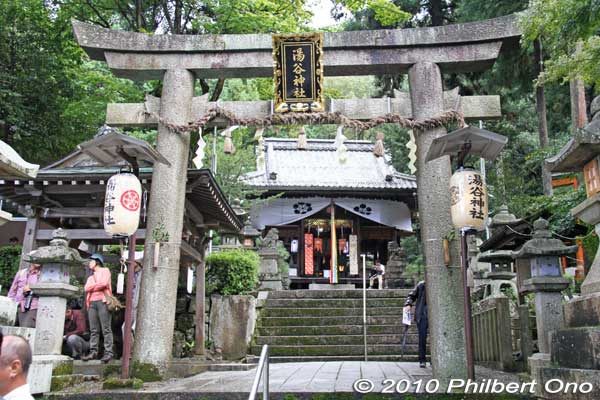
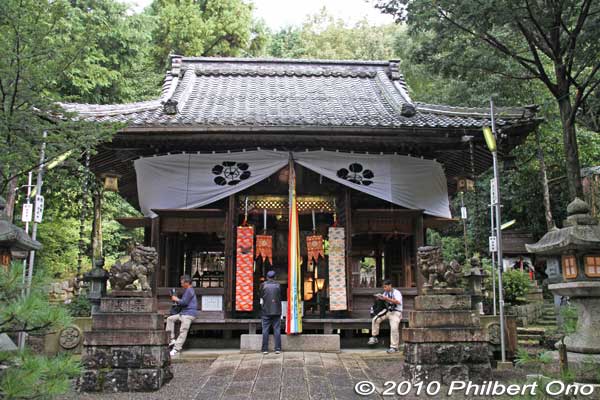
The festival is held by Yutani Shrine (湯谷神社) in Maihara, a short walk from JR Maibara Station (east side). The main kabuki performance is held here on the main festival day on Sunday (Honraku 本楽). See the festival schedule below.
The shrine worships Okuninushi (or Onamuchi-no-Mikoto (大己貴命), deity of the Great Land associated with Izumo in Shimane Prefecture, and Ukemochi (保食神), goddess protector of food. The shrine is also where Emperor Meiji took a rest during his travels in this area. Yutani Shrine location: https://maps.app.goo.gl/pHn8v4jaAY6rVrZw6
The festival is run by the Maihara Hikiyama Matsuri Preservation Society (米原曳山まつり保存会). They make the important decisions, maintain the official website, print the festival pamphlet, etc.
Maihara Hikiyama Matsuri floats
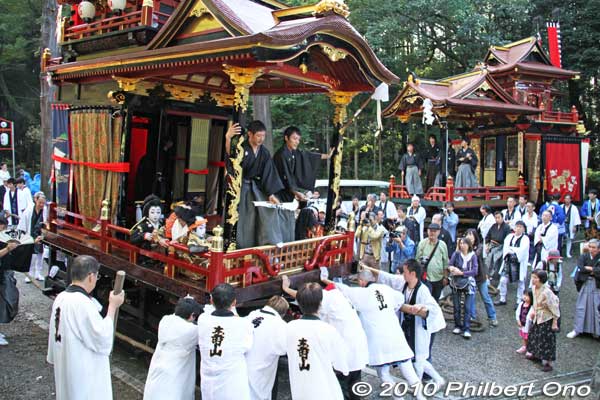
Maihara Hikiyama Matsuri’s three floats (called hikiyama or yama) represent three different neighborhoods near Yutani Shrine on the east side of Maibara Station. Only one (or maybe two) float performs during the festival. One exception was in October 2022 when all three floats staged kabuki performances to make up for the festival’s cancellation in 2020 and 2021 due to COVID-19.
The three floats are Asahiyama (旭山), Juzan (壽山), and Sho-ouzan (松翁山). While walking around the neighborhoods, you may see tall storehouses for the floats.
Maihara Hikiyama Matsuri floats are very similar to Nagahama Hikiyama Matsuri floats because they were built by the same famous Fujioka carpenter family in Nagahama who built Nagahama Hikiyama floats. They look very similar with distinctive roofs, woodcarvings, lacquerwork, and kabuki stages.
The floats are like Buddhist altars on wheels without the Buddha statue. Which is interesting because this is a Shinto festival. They have a decorative upper structure (chin 亭) and a lower structure for the kabuki stage and backstage. It is unknown exactly when the current floats were built, but it’s likely they date back to at least the late 19th century. Although the floats are not as splendid as those in Nagahama, Maihara takes pride in the child kabuki performances considered to be superior to Nagahama’s. Or at least longer, about an hour or longer.
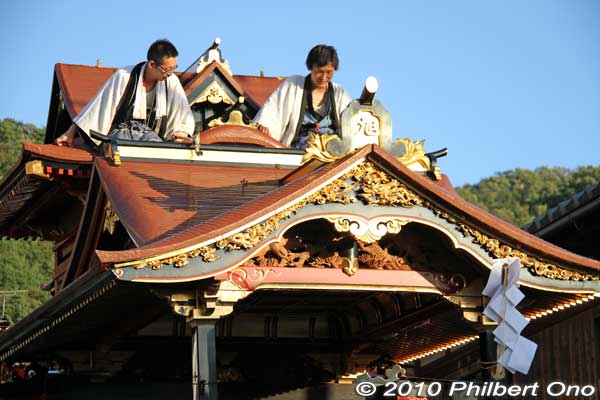
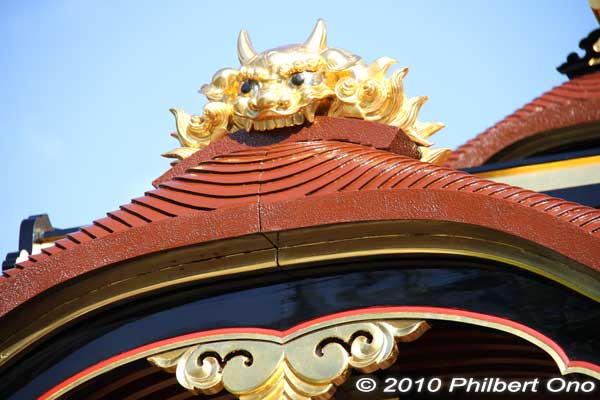
Right: Rooftop lion head on Juzan float.
The kabuki stage is about 4.5 tatami mats in size. Behind it is a small, screened backstage where actors standby and the tayu narrator and shamisen player perform without being seen. The actors come on stage through a rear sliding door or through a curtain on the left or right hanamichi ledge.
To move the floats, two long ropes in front are pulled by many people while people also pull on ropes attached to the rear to brake the float when going downslope. The wheels cannot turn, so they use long wedges to steer the wheel.
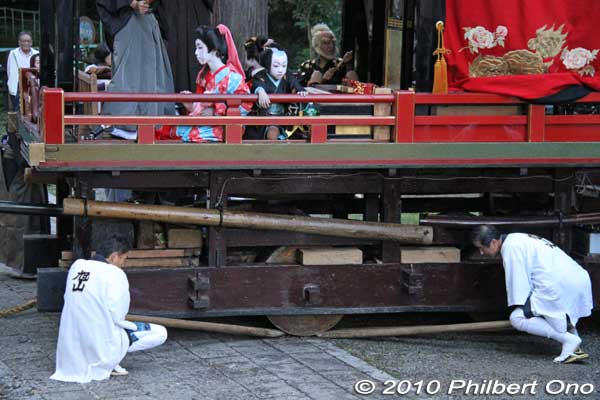
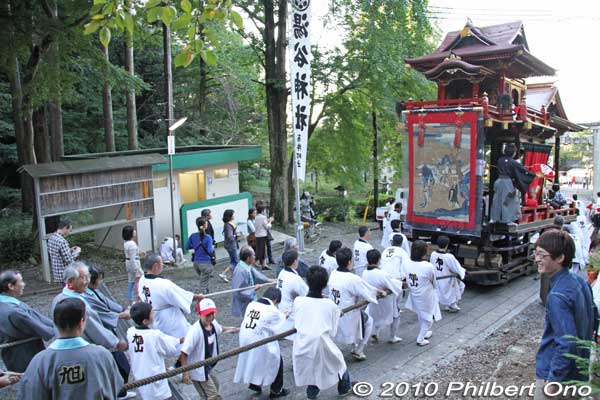
Right: Ropes also attached to the float’s rear to brake the float.
Asahiyama float (Morning Sun float 旭山)
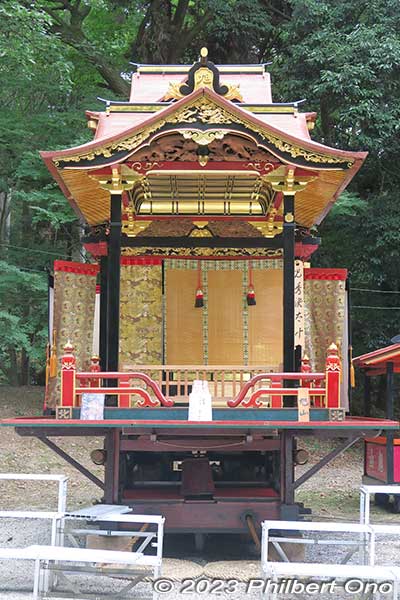
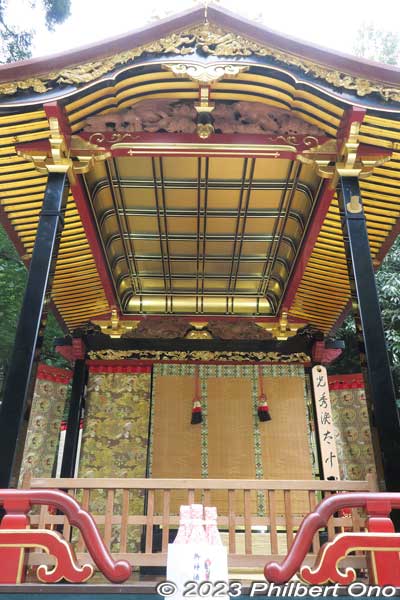
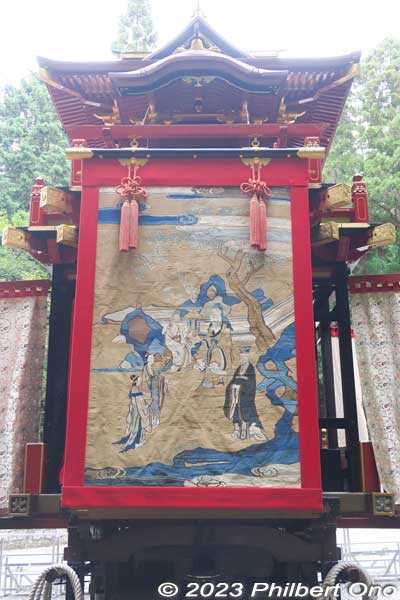
Asahiyama float was originally built in 1760 in Nagahama as the Godo-cho neighborhood’s float, but it later went to Maihara.
Size: 6.3m high, 2.8m wide, 5.4m long
Asahiyama float location (Kitamachi neighborhood): https://maps.app.goo.gl/NmGnEwnZBw84wTZ76
Sho-ouzan float (Pine Tree and Venerable Old Man float 松翁山)
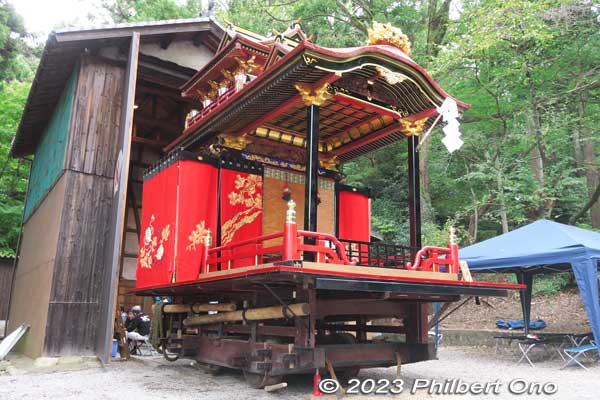
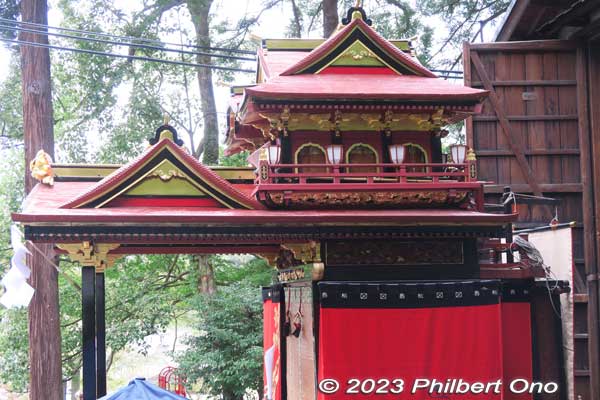
Right: The lower level has the stage, and upper structure is called the chin.
Sho-ouzan float was modeled after the Okina-zan float in Nagahama and built by Fujioka Izumi (1617–1705) who was a prominent carpenter and woodcarver. The rear tapestry was made in China, showing Chinese people flying kites. The name denotes longevity meaning “evergreen pine tree” and “venerable old man.” Size: 5.9m high, 2.8m wide, 5.0m long.
Sho-ouzan will appear in Oct. 2024.
Sho-ouzan float location (Nakamachi neighborhood within Yutani Shrine grounds): https://maps.app.goo.gl/HWapR2CpxDSZ3u8j7
Juzan float (Longevity float 壽山)
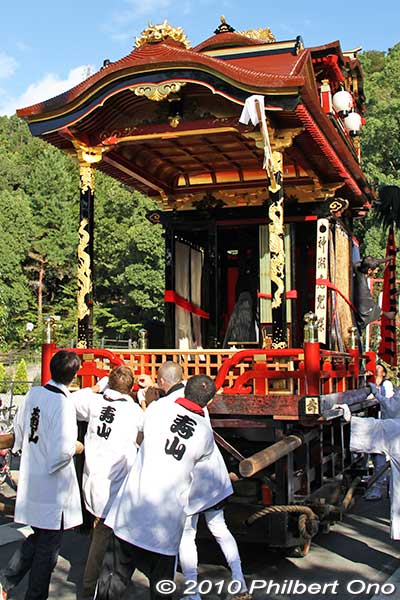
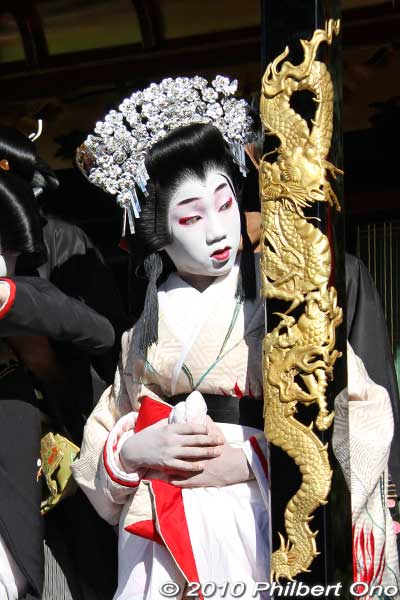
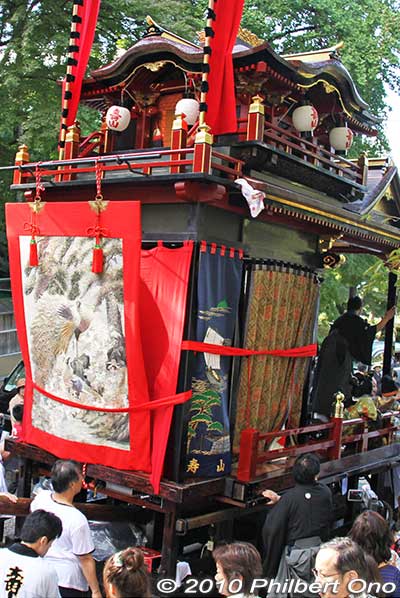
Juzan float location (Minami-machi neighborhood): https://maps.app.goo.gl/dW8m8pwxnj44tbw76
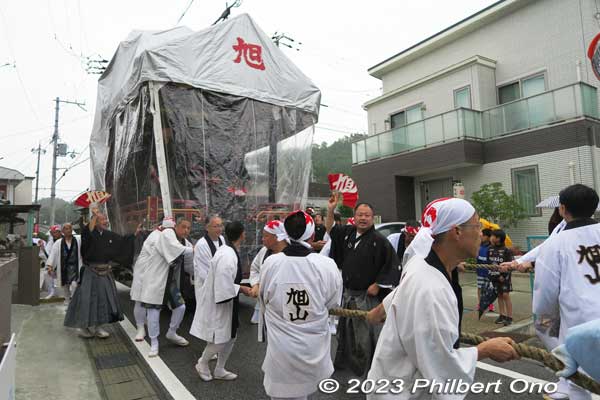
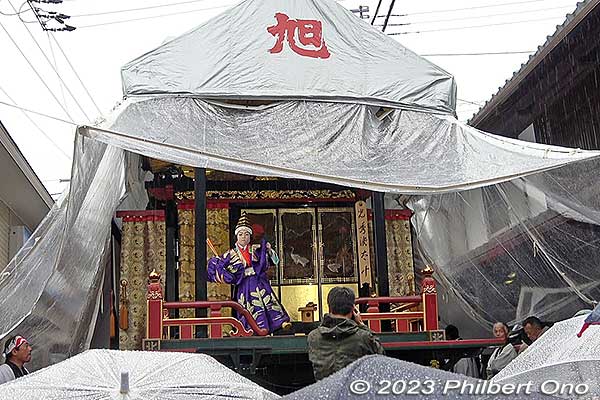
Anatomy of hikiyama floats
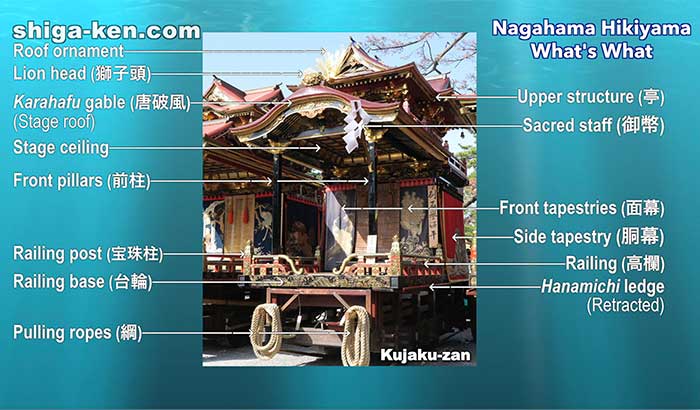
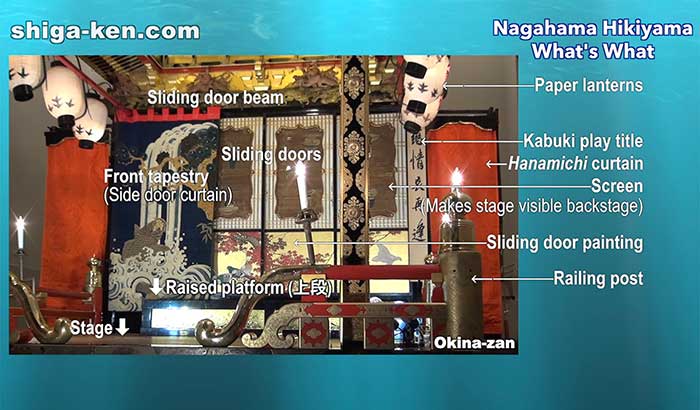
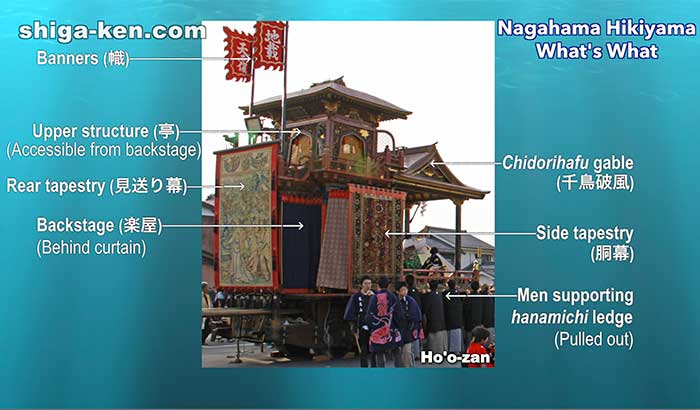
Maihara Hikiyama Matsuri Detailed Festival Schedule
Maihara Hikiyama Matsuri (or Maibara Hikiyama Matsuri) is held on the three-day holiday weekend when the second Monday in October is a national holiday for Sports Day. Here’s a detailed schedule.
When you get to Maibara Station, go out the east exit (don’t go downstairs) and walk on the corridor to Maibara City Hall (米原市役所). The tourist information office is on the 3rd floor. You can get a festival pamphlet and ask for directions. The festival site is a short walk from Maibara Station. See map below. Also watch the video.
Day 1, Saturday (Yoimiya Festival Eve 宵宮)
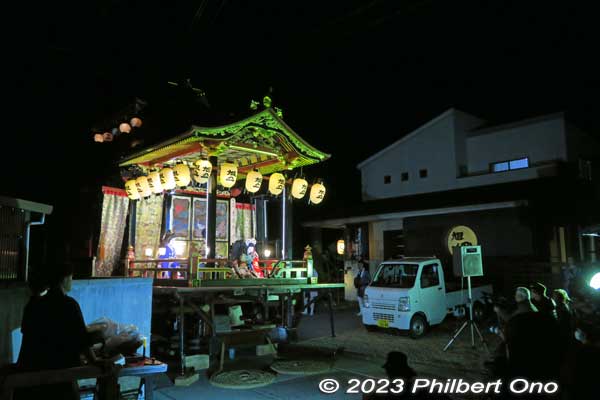
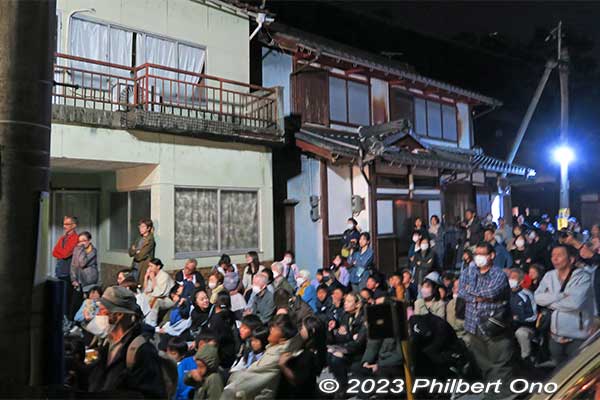
⭐Neighborhood kabuki performances
The float performs kabuki during the day and evening at different locations near Maibara Station. Depending on the float, it may perform two or more times this day. Check the official pamphlet for exact times and locations
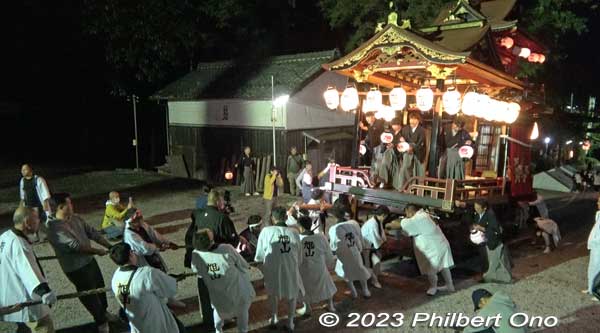
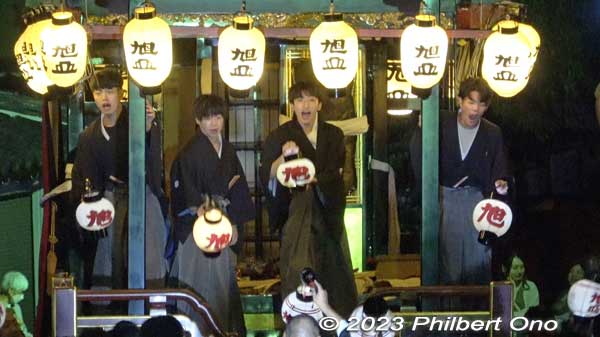
⭐Evening float parade to Yutani Shrine
In the evening, after the evening kabuki performance ends at around 7:00 pm or 7:30 pm in the neighborhood, the float is pulled through the streets to Yutani Shrine. This is a boisterous spectacle called Noboriyama (登り山) or parade to the shrine. It’s a short distance, but they stop and go along the way.
Going up the slope leading to the shrine is another highlight. They arrive at around 8:30 pm. The float is then parked at the shrine overnight.
*Note that in the case of rain, the float will be covered with vinyl. This might make it hard to see the kabuki.
*Kabuki performances in local neighborhoods will have some chairs. However, if it’s really crowded, you may have to stand up.
Day 2, Sunday (Honraku Main Festival Day 本楽)
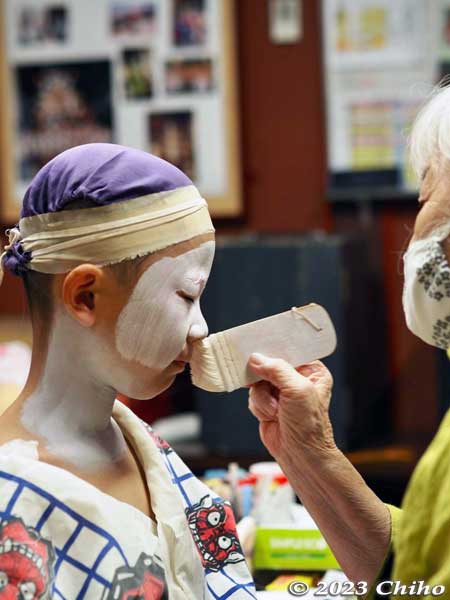
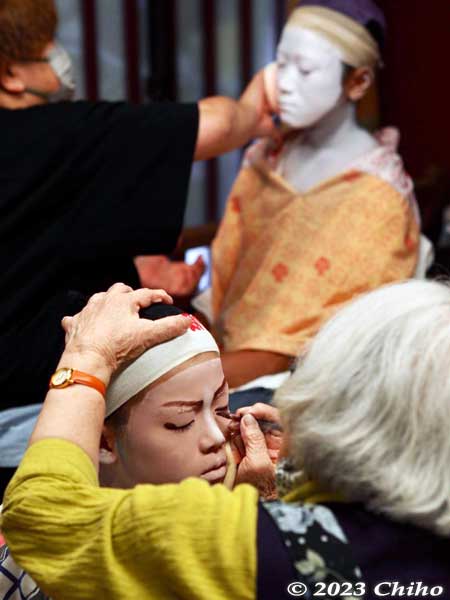
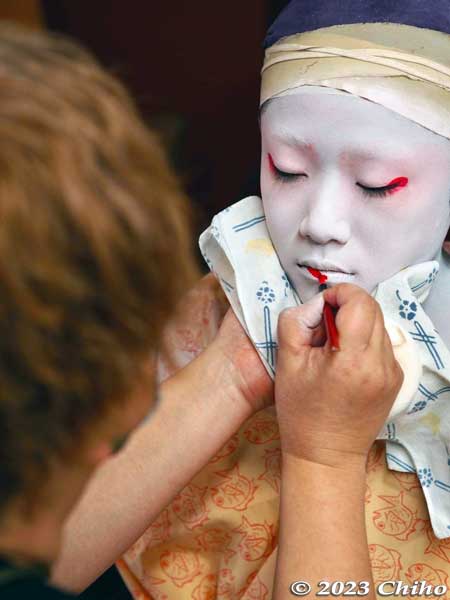
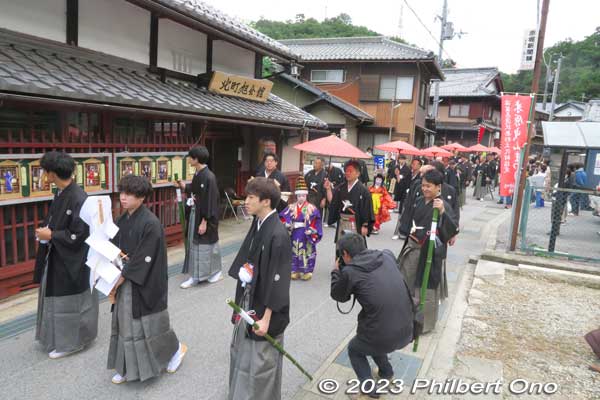
⭐Morning Kabuki Procession (本楽 役者御渡り)
In the morning at around 9:00 am, the child kabuki actors walk in a procession from their neighborhood to Yutani Shrine. They are in full kabuki costume and escorted by their father or grandfather in an entourage of shrine and festival officials dressed in traditional haori-hakama.
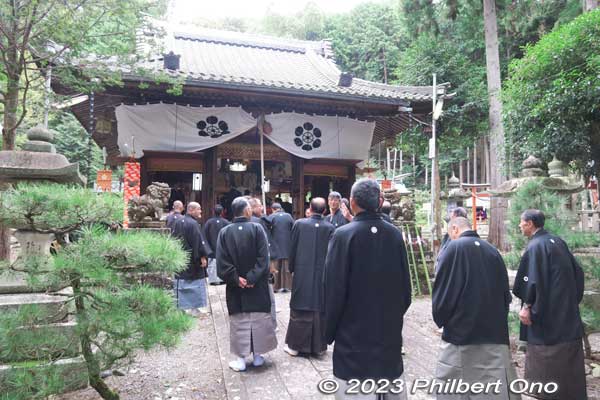
After arriving at the shrine, they all go to the worship hall for a religious ceremony.
⭐Main Kabuki Performance at the shrine (神前奉納狂言)
From about 12:15 pm at Yutani Shrine, the main kabuki performance is held on on the float parked in an open space in front of spectator bleachers. Free admission.
It won’t be terribly crowded, but if you want a good seat, go well before noon. The kabuki lasts no more than an hour. minutes. If two floats will perform, the next float will perform soon after the first one leaves the shrine.
⭐Neighborhood kabuki performances
After the main performance at the shrine, the float moves to other locations near Maibara Station and performs two or three more times. When the float moves, it’s also another photo/video op. The final performance may end as late as 9:00 pm.
Day 3, Monday (national holiday) (Goen After-Festival Kabuki 後楽)
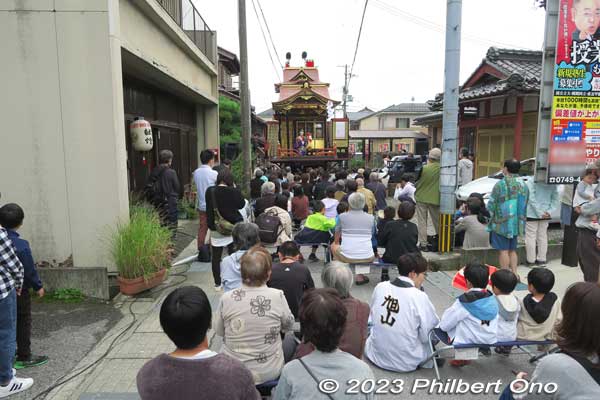
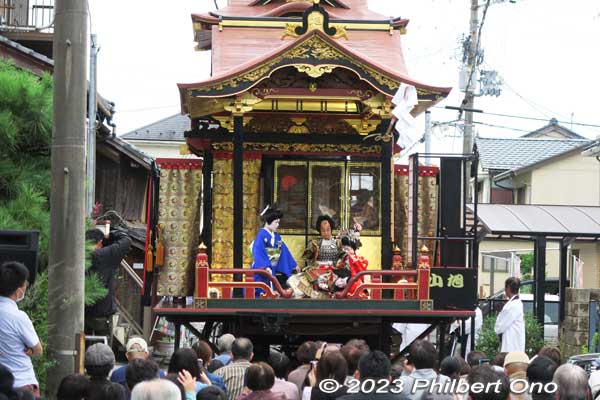
⭐Neighborhood kabuki performances
If you missed seeing the kabuki on the previous two days, your last chance will be this last day. The float will move to different neighborhoods near Maibara Station and perform kabuki.
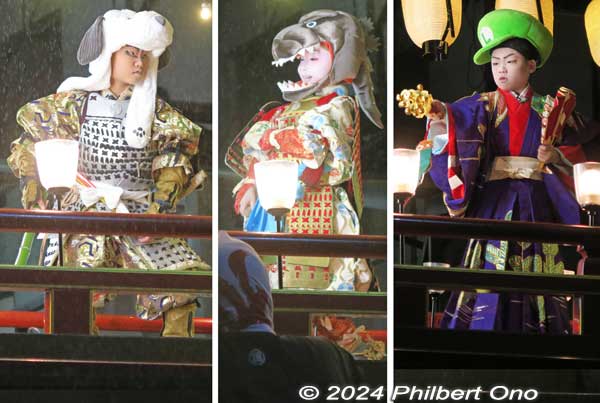
The festival’s final performance (Senshuraku 千秋楽) will be held in the float’s own neighborhood usually around 8:00 pm. The final performance may end as late as 9:00 pm.
The final performance might be the most fun because they allow the actors to wear comical costumes, use absurd props, and replace their spoken lines with jokes. Lots of laughs for the boys and their families and friends. (See photos.)
Pre-festival days/months
It takes at least six months of preparations to stage the Maihara Hikiyama Matsuri festival in October. From April, the festival planning committee starts to meet and decide a million things. In June, they decide on the kabuki play to be performed. In July, they officially choose or request the boys to appear in the kabuki play. Obviously, their parents must be also willing since it’s a substantial committment.
From August, the boys start their kabuki training. They first spend about a month at home memorizing their lines while listening to a sample recording on a CD disc. They imitate the kabuki speech and intonations.
Then from mid-September for about two weeks, all the boys gather every day in a neighborhood community hall and practice their acting roles with a kabuki actor-instructor for a few hours every day. This is when they apply their memorized speaking lines to physical motions and facial expressions while interacting with the other actors.
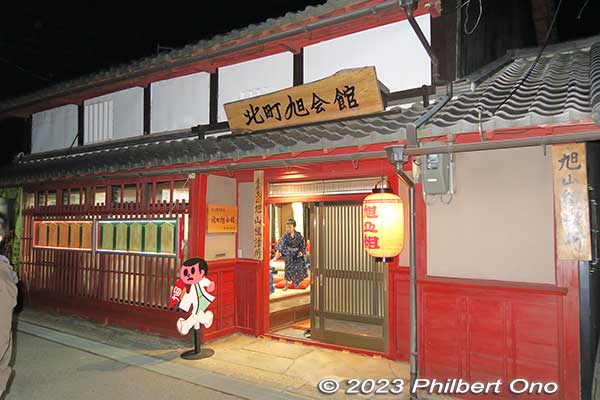
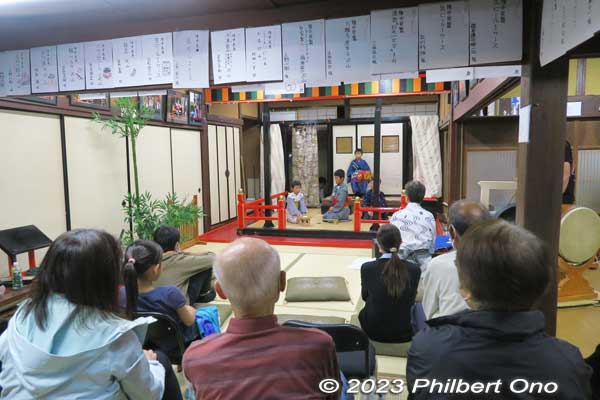
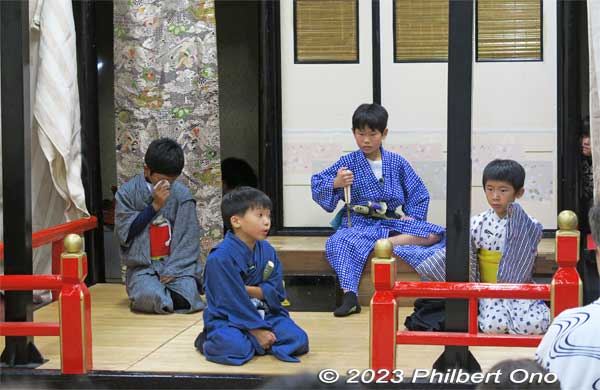
Very intense training, and most boys break down and cry at one time or another, especially when they get scolded, can’t get it right, or feel too exhausted. There are times when they don’t want to go to practice. This is when it’s important for the parents to be understanding and provide full moral support and encouragement to their sons to keep them going.
⭐Thursday evening around 7:30 pm
On the Thursday evening before the festival weekend, parents and relatives of the boys are finally invited to watch them practice during their final practice session (photos above). By this time, they are well trained with the instructor giving them only a few last-minute advice. The actors are not in costume, and they practice together with the tayu narrator (太夫) and shamisen player who perform live backstage. This is not really open to the public.On the next day on Friday, the day before the festival starts, there’s an evening dress rehearsal on the float in the float’s neighborhood near the float’s storehouse. In these ways, the butterflies in the boys’ stomachs gradually ease up as they start performing in front of an audience.
⭐Friday evening
On the next day on Friday, the day before the Festival Eve, there’s an dress rehearsal in the evening on the float in the float’s neighborhood. The dress rehearsal kabuki performance is called Shigaku (試楽). The boys are in full kabuki costume and makeup. If you know where it is, you can see it as well.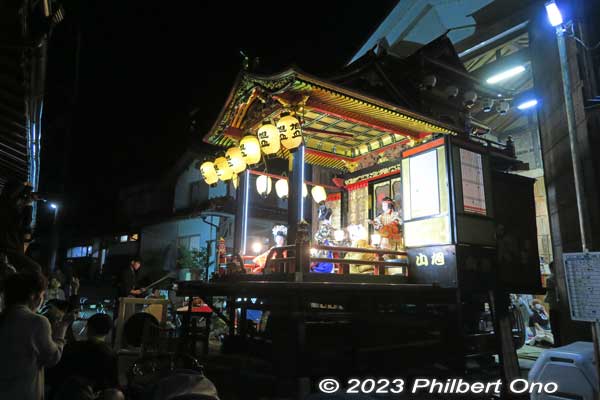
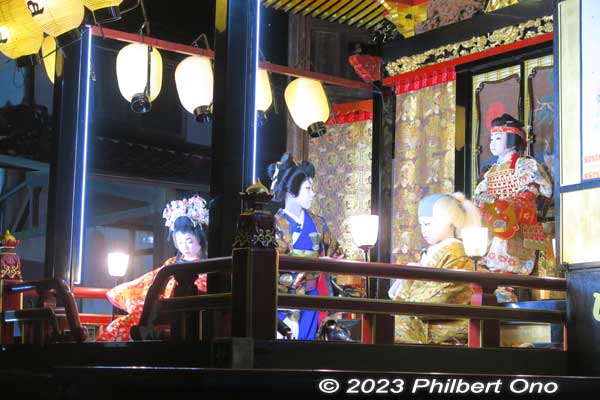
Hadaka-mairi procession (裸参り)
Also on Friday evening, after the dress rehearsal, the Hadaka-mairi procession (裸参り) by shirtless young men (waka-renchu 若連中) pull a festival cart and briefly visit each kabuki actor’s home to wish him good health and safety. The family comes out to greet them and serve sake/beer and snacks (or soft drinks to underage boys). Then they proceed to Yutani Shrine to be blessed by the priest. Hadaka-mairi runs pretty late in the evening and not really geared for the public to watch.
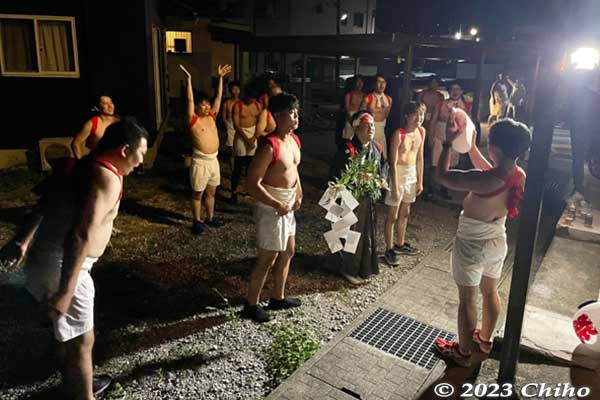
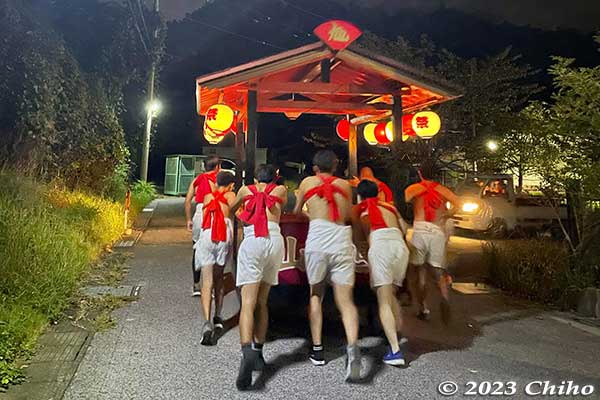
Kabuki characters
As in authentic kabuki, Maihara’s child kabuki features a great variety of characters. Young, old, male, female, samurai, geisha, priests, peasants, etc. We can therefore see a great variety of costumes and makeup work on the boys. Here’s just a sample from past years.
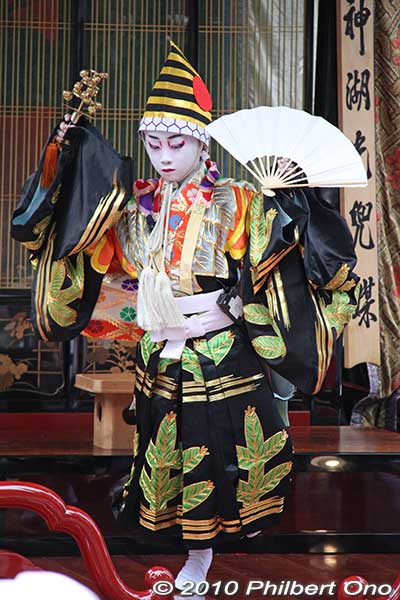
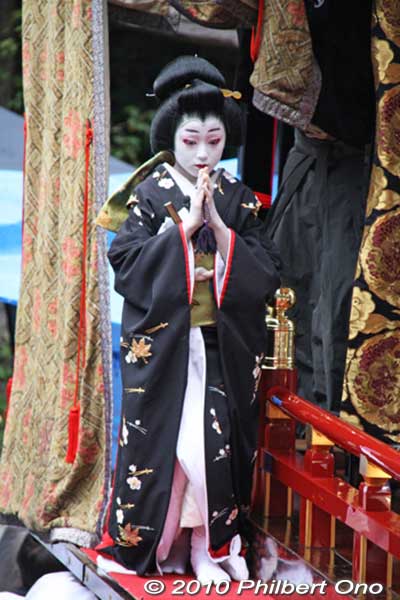
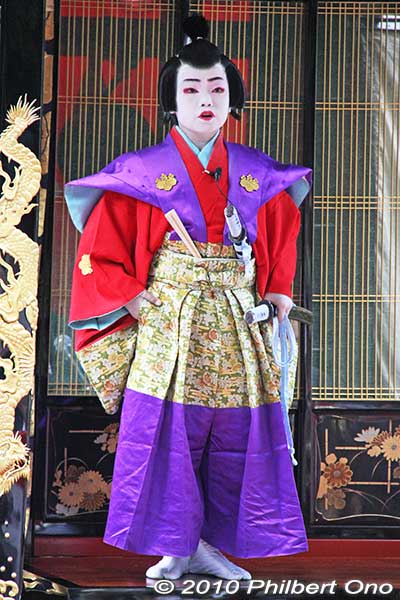
The Sambaso dancer (三番叟) performs first before the kabuki play. He holds a bell tree shaped like a ripe rice plant and performs prayer dances for a rich harvest. Sanbaso shakes his bell tree and mimes the planting and growing of rice. His high cap has tiger stripes and a red sun on both sides. Sanbaso is performed on auspicious and celebratory occasions and comes from Noh and kabuki.
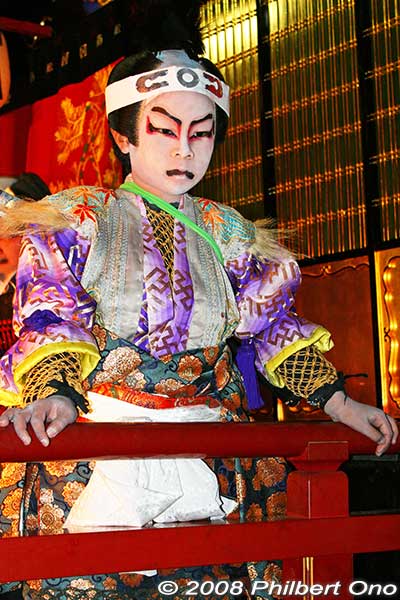
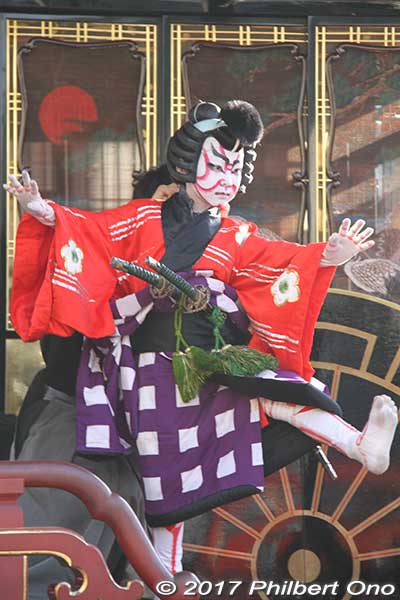
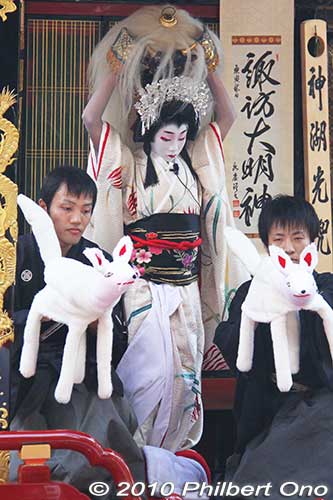
Kumadori kabuki makeup is for strong hero characters in aragoto style. On the right is a princess is possessed by the fox spirit and dances wildly (kitsunebi 本朝廿四孝〜十種香・奥庭狐火).
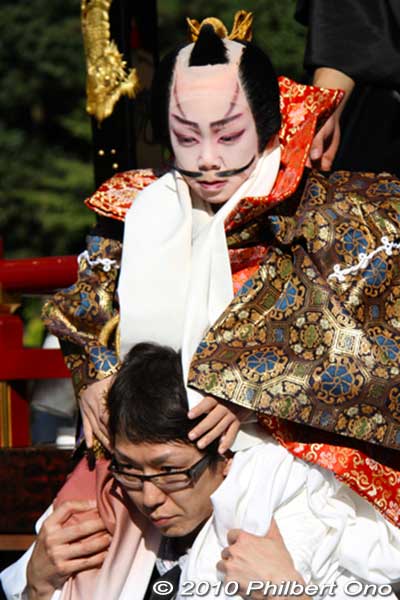
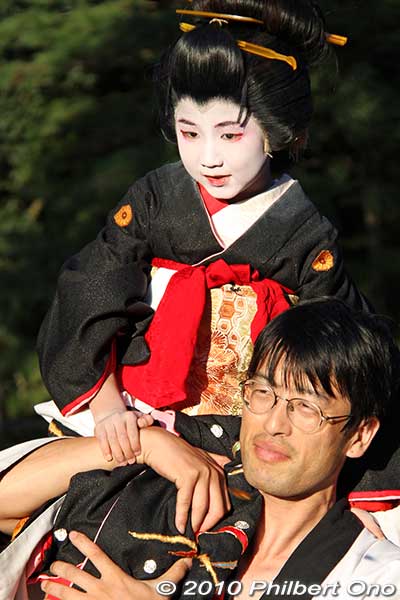
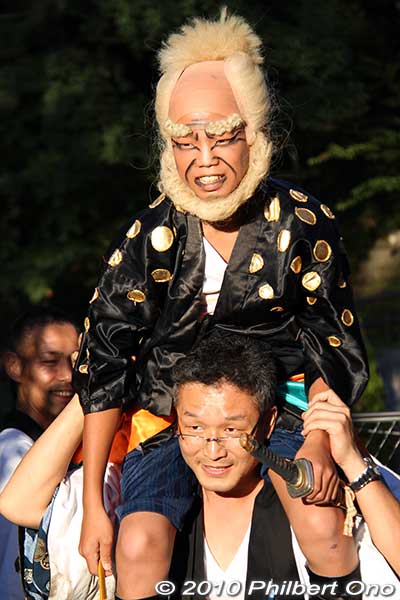
Kabuki actors are not allowed to touch the ground after a performance, so they are carried to the car.
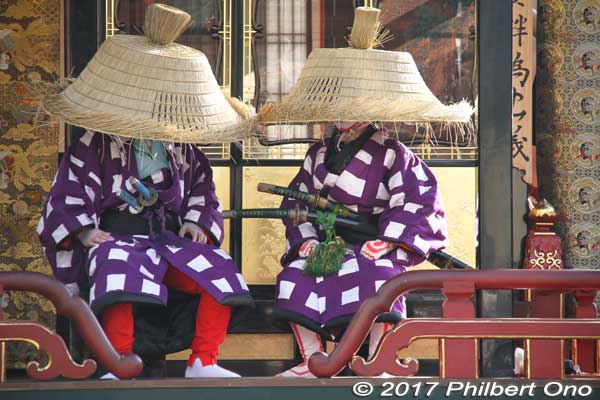
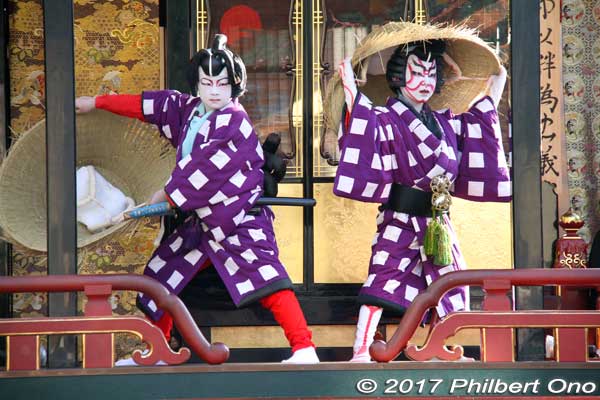
Masterless samurai hiding their fearsome warrior faces with straw hats in Sugawara Denju Tenarai Kagami – Kurumabiki.
Map
Side Trips
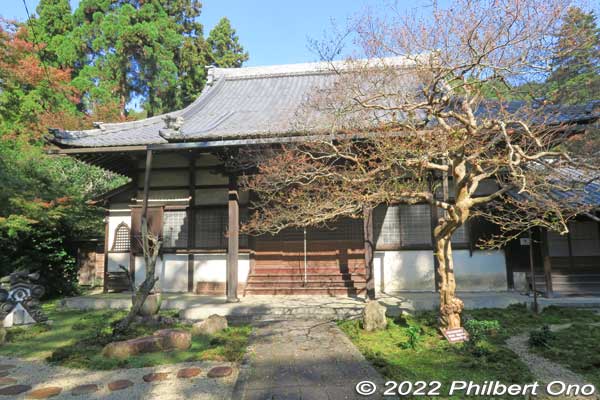
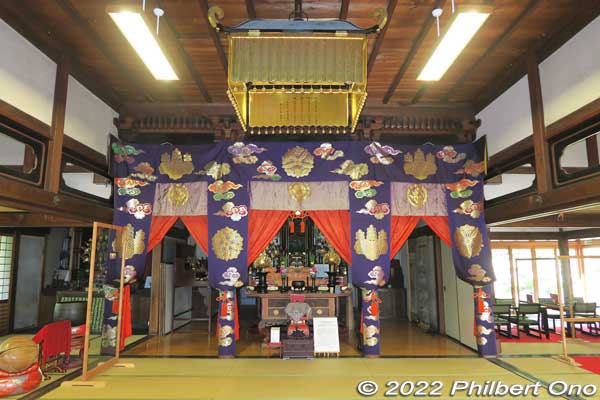
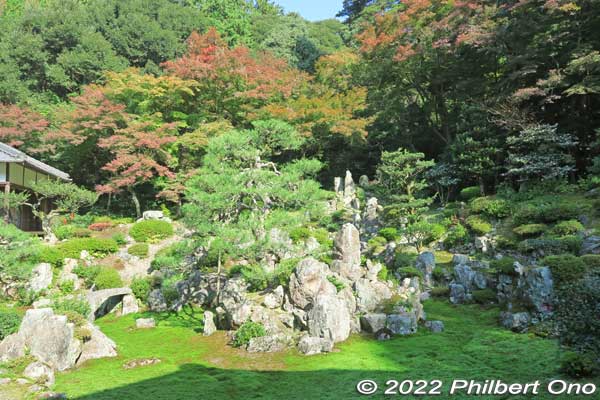
If you have time, I recommend visiting Seiganji Temple (青岸寺) in the same neighborhood as the festival. It’s a Soto Zen Buddhist temple noted for its beautiful Japanese garden. Open 9:00 am to 5:00 pm. Small admission charged.
Yutani Shrine is at the foot of Mt. Futo-o (254m 太尾山) which is an old castle site built by the local Yonehara Clan (米原氏) and abandoned by 1571. The 30-min. hiking trail to the castle site starts near the shrine. The trail forks to the south peak and north peak which is higher. The north peak is the more logical path since it leads to another trail to another lookout point before you descend the mountain. Best to hike with a friend and not alone.
If you want to see two or three days of the festival, stay overnight at Toyoko Inn, a convenient hotel in front of Maibara Station’s west exit on the opposite side. That side of the station also has a large supermarket called Heiwado Friend Mart open from 9:00 am to 9:00 pm.
If you have an extra day, you can rent a bicycle at Maibara Station’s east exit and ride to Lake Biwa and Hikone Castle.
More about Maibara here. Hope we see you sometime!
Video: https://youtu.be/jdK1obPWRts
Official festival website (in Japanese only): http://www.biwa.ne.jp/~hozonkai/
Sources:
http://www.biwa.ne.jp/~hozonkai/gyouji/gyouji.html
https://core.ac.uk/download/pdf/5026091.pdf
